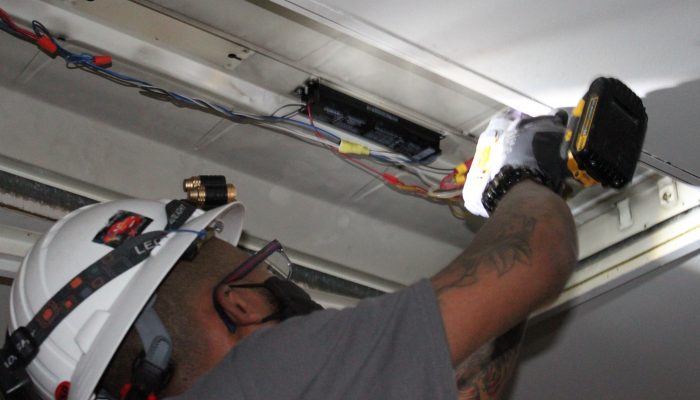The City of Philadelphia has made significant progress in reducing greenhouse gas (GHG) emissions in municipally owned buildings. The City’s 2021 update to the Municipal Energy Master Plan (MEMP), which uses 2019 data, shows a 39% reduction in GHG emissions, or a reduction from 219,306 MTCO2e (Metric Tons of Carbon equivalent) to 133,527 MTCO2e. Thanks to the Municipal Energy Master Plan Dashboard, this data is made available for public viewing.
With Philadelphia’s goal of becoming carbon neutral by 2050, reducing building emissions that comprise 72% of Philadelphia’s carbon footprint remains a crucial priority. To support city-wide goals and lead by example, the City developed the MEMP. Released in 2017, the plan is the roadmap for energy efficient operations in municipally owned buildings and addresses energy efficiency, renewable energy generation, and climate resiliency. The MEMP has four goals for City operations:
- Reduce greenhouse gas emissions by 50 percent by 2030;
- Reduce energy use 20 percent by 2030;
- Generate or buy 100 percent of all electricity from renewable resources by 2030;
- Maintain or reduce the cost of energy at facilities.
Along with tracking greenhouse gas emissions, the MEMP Dashboard’s 2021 update also includes other important data on the City’s energy use. This includes electricity consumption, primary heating consumption, renewable electricity, and cost of energy. Due to the time required to audit and organize energy use data and to calculate carbon emissions using the prepared data, municipal reporting is delayed by about 12 months. See below for the 2021 update, which uses data from 2019:

The City uses the regional electricity grid, which is becoming cleaner due to the addition of more renewable sources of electricity generation like solar and wind. The decrease in electricity consumption, primary heating consumption, and cost, along with the increase in City purchases of renewable electricity is also a result of improved operations and the completion of energy saving projects. The City expects a further increase in the percentage of renewable electricity when the solar power purchase agreement (PPA) begins generating electricity in 2022.
In addition to reducing GHG emissions by 39%, significant progress has been made in the total cost of energy, down about 20% from $42.4 Million to $33.4 Million, a total of about $9 million saved. Both electricity consumption, measured in megawatt-hours (MWh), and primary heating consumption, measured in million British thermal units (MMBTU), are also on a decreasing trend, helping save energy and money.
Other exciting updates from the Office of Sustainability’s Energy Office from the past year include the completion of the energy savings project at the Philadelphia Museum of Art and the success of the peak load management program. By managing peak load (high electricity use days) this past summer, the Energy Office, in collaboration with partners across the City government, was able to save the City about $1 million in future costs. Check out an archived blog post on load management to learn more about this program.
Monitoring energy efficiency progress not only helps reduce energy use at the City’s own facilities, but also helps hold the City of Philadelphia accountable to people and the planet. Stay up to date on the City’s progress by checking out the Municipal Energy Master Plan Dashboard!




